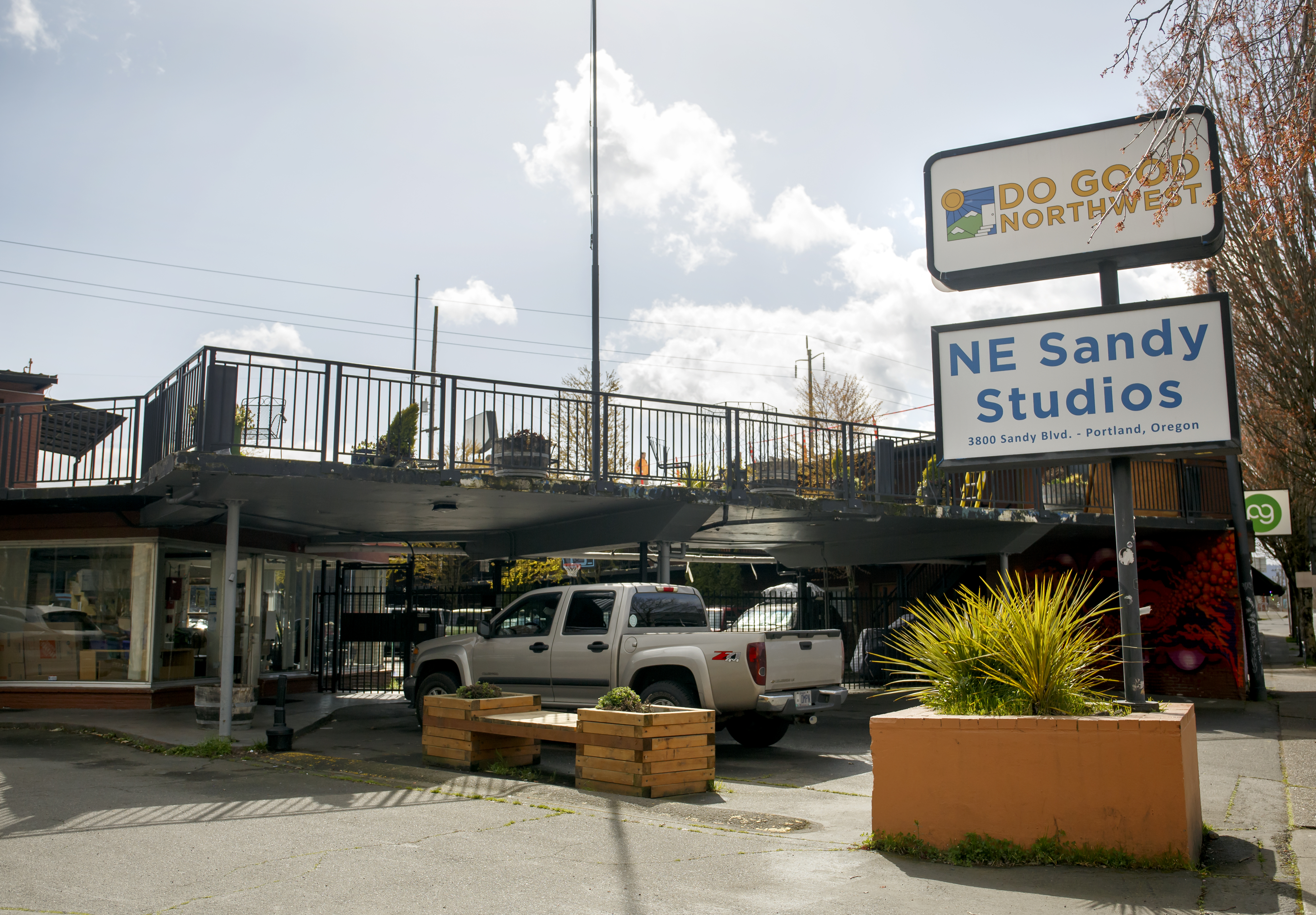
NE Sandy Studios in Northeast Portland on March 29, 2021. All residents of this supportive housing for formerly homeless veterans are now relocating due to the conditions of the facility.
Kristyna Wentz-Graff / OPB
In its first year, Metro’s supportive housing fund placed 1,669 people into homes.
That’s the takeaway from three reports submitted to the fund’s oversight committee by representatives from Multnomah, Washington and Clackamas counties.
Now, the fund’s oversight committee will review the county reports and provide recommendations.
“We are making significant progress in just the first year of a 10-year effort, and that’s just incredibly exciting for all of us to see,” Metro’s regional housing director, Patricia Rojas, said.
This recent number of placements is higher than the initial numbers published in August. According to Metro, the regional government agency for the three counties, Washington County’s report undercounted 60.
Approved by voters in 2020, the fund is supported by a tax on high-income individuals and businesses with gross receipts above $5 million. Supportive housing includes not only a place to live but services to help support that, from case management support to rental assistance.
In the first year, each county started at a different place in serving people experiencing homelessness or at risk of homelessness.
“The first year, counties were building significantly, and scaling, and expanding,” Rojas said. “Some counties, like Multnomah County, had quite a bit to work from, and they were scaling out a lot of systems and infrastructure they already had. Other countries, like Clackamas and even Washington … are kind of building from scratch.”
Multnomah County, where leaders said the new funds helped expand their work, was able to place 1,129 people into housing. That was just a fraction of the 4,560 people who received permanent housing in the county through the Metro program and other funding sources.
Clackamas and Washington County worked in keeping programs from closing or developing programs to better serve more people.
Clackamas reported placing 170 people into housing, with a long-term goal of providing 1,065 supportive housing units over 10 years through the supportive housing fund.
Washington County reported helping 370 people gain housing through the Metro program. In another section of the report, the authors acknowledge the challenge of starting from scratch.
“Washington County set ambitious goals that did not account for the time needed to develop this system with our partners and our first housing placement did not occur until December 2021.”
Counties also used the Metro funds to increase shelter capacity, provide rental assistance, and help prevent evictions.
Statewide, providing permanent housing remains a goal, with some progress. Earlier this year, the state surpassed its goal to provide 1,000 affordable housing units by 2023. Still, the issue remains significant, especially in the Portland metro area. The most recent point-in-time count estimated Multnomah’s homeless population exceeded 5,000 people in Jan. 2022.
In Portland and the surrounding areas, Rojas said the goal is to not only create a system but make sure it sticks around.
“What we will see over 10 years is not just the creation of a regional infrastructure, but the stabilization of a lot of services and infrastructure that existed previously,” Rojas said.
Next steps
The second year of the 10-year program is underway, but the Supportive Housing Services Oversight Committee will hear presentations from country representatives on the program’s first year at a meeting on Dec. 5. The oversight committee will be looking for consistency and whether each county complied with its local implementation plans.
“What were the performance highlights? What were the challenges? How did their outcomes actually end up looking? And are there opportunities, or even recommendations, to either the counties or Metro Council?” Rojas said.
Come January, the committee will begin putting together a regional annual report that may include answers to those questions.
As the housing program continues, counties will be collecting more data, including the retention rate for people housed using the funds. That data will be published in next year’s report.
Clackamas County counted two people who returned to homelessness after receiving permanent housing.
Over the program’s 10 years, Rojas said she wants to see chronic homelessness end by having programs people can access when they need help.
“We want to see a system where, if somebody falls into homelessness, that they don’t stay there for long,” Rojas said. “That we are able to quickly respond with housing, and services so that an individual does not become chronically homeless.”


